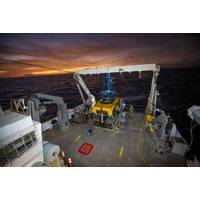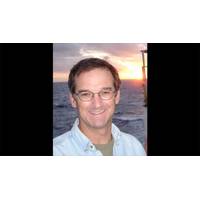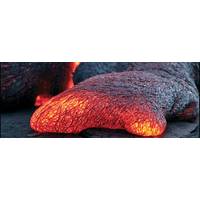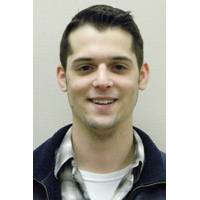
PODCAST: The Adriatic Affair - Finding the 1856 Le Lyonnais Wreck
member of Boston Sea Rovers, and speaks frequently at museums, dive clubs, and conferences about underwater exploration. She is the creator of All Aboard!, an educational program aimed at bringing maritime history into classrooms and communities. Jennifer earned her B.S. in public relations from Boston University and her J.D. from Suffolk University Law School. Her first book, “The Adriatic Affair: A Maritime Hit-And-Run Off the Coast of Nantucket” (Schiffer Publishing) will be released on March 18, 2025. The book tells the story of the collision that sank Le Lyonnais and its aftermath and

Deep Sea Science:Deep Sea Reveals Insights on Human Immunity
cancer treatments and vaccines, according to a collaborative study published in Science Immunology.The findings, published last week, contradict the long-held belief that human cells can recognize any bacteria they come across. The study, conducted by researchers at the Rotjan Marine Ecology Lab at Boston University, the Kagan Lab at Boston Children's Hospital and the government of Kiribati, looked at the properties of bacteria from the deep sea collected on a Schmidt Ocean Institute expedition in the Southern Pacific Ocean.Bacteria from the deep sea were found to have "immuno-silent properties"

Surprising Enzymes Found in Giant Ocean Viruses
include: Andrew Warrilow, Claire Price, and Steven Kelly (Swansea University Medical School); Marie True and Tom Poulos (University of California Irvine); and David Nelson (University of Tennessee).The research was supported by a USA-UK Fulbright Scholarship, grants from the Royal Society, the Boston University Superfund Research Program, European Regional Development Fund and Welsh Government Project and by National Institutes of Health and National Science Foundation grants to the Woods Hole Center for Oceans and Human Health.The Woods Hole Oceanographic Institution is a private, non-profit organization

WHOI Names Murray Deputy Director & VP for Research
has accepted the position of the Deputy Director & Vice President for Research of the institution. He will assume the office on September 1, 2019.A geochemist whose research focuses on interpreting chemical records of climate change and volcanism in marine sediments, Murray joins WHOI from Boston University, where he has been since 1992 and is currently a professor of Earth and Environment. Murray was director of the Division of Ocean Sciences at the National Science Foundation (NSF) from 2015-2018. In addition to his regular duties at NSF, he also co-chaired the Subcommittee on Ocean Science

Mexican Wave Energy Project Moving Forward
commercial breakthroughs have so far been limited, experts say.“Ocean energy has not yet reached the commodity phase of development. If you want solar, go buy some solar panels. If you want wind energy, go buy a wind turbine,” said Mark Horenstein, professor of electrical engineering at Boston University“In the case of ocean energy, no one company or entity has come up with the killer application that’s going to be the definitive method for ocean energy.”Any ocean technology also has to be able to survive a “100-year storm” - the worst storm expected over a century

A Soft Solution to a Hard Underwater Problem
in the lab, making it faster, easier, and cheaper to create solutions to existing problems.”Additional authors of the paper include Kaitlyn Becker and Mortiz Graule from the Wyss Institute and Harvard SEAS, Brennan Phillips, Ph.D. from the University of Rhode Island, Randi Rotjan, Ph.D. from Boston University, Timothy Shank, Ph.D. from Woods Hole Oceanographic Institution, and Erik Cordes, Ph.D. from Temple University.The research was supported by the National Oceanographic and Atmospheric Association, the Schmidt Ocean Institute, the National Science Foundation, the National Academy of Sciences
Horizon Marine Adds Three New Hires
as a MetOcean Analyst with a B.A. in Earth and Oceanographic Science from Bowdoin College. Drew’s physical and biological oceanographic research and experience is in data processing, numerical modeling and remote sensing. Aaron Rosenberg received a B.S. in Marine Science from Boston University and dual M.S. in Environmental Engineering and Oceanography from the University of Connecticut. Aaron’s focus to date has been in air-sea interactions as they relate to storm surge forecasting, numerical modeling and ocean observations. Michael Leber is a 2013 cum laude graduate

Oceanic Lava Flow Research Explains Earth's Formation
suggests that sulfur—likely derived from the hydrothermally-altered oceanic crust—was subducted into the mantle more than 2.5 billion years ago and recycled into the mantle source of the Mangaia lavas,” said Rita Cabral, the study’s primary author and a graduate student in Boston University’s Department of Earth and Environment. The data also complement evidence for sulfur recycling of ancient sedimentary materials to the subcontinental lithospheric mantle previously identified in diamond inclusions. Other study co-authors are: Matthew G. Jackson of Boston University

Hydroid Hires Two New Employees
Data Services, where she managed client services, project management and business integration for U.S. and international clients. Her focus at Hydroid will be on client communication, improving processes and client training programs. Kelly is a graduate of Tufts University and holds an MBA from Boston University. www.km.kongsberg.com/hydroid
 December 2025
December 2025





